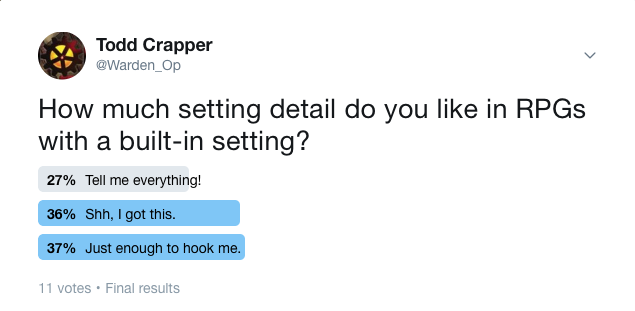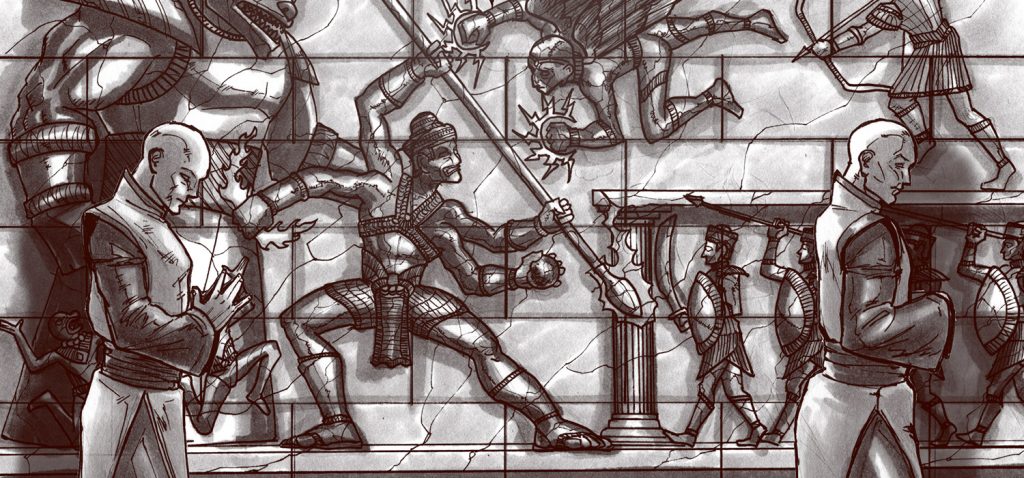The Personal Touch
No two lives are the same. Each of us enter the One Land as a newborn clinging to hope, desperate to survive the hardships that will make us an individual with our own stories to tell. These cities, streets, and landscapes are no different. They began as nothing more than dust and have grown into one of any number of personal discoveries.

Since HPS was published (even during the launch of HPS Legends, now that I think about it), people have asked me one question in particular. “Are you planning to release any setting supplements?” The quick answer is no. The long answer relates to something I wanted to share with you as the next installment of the Rules of Enlightenment: making it your world.
While my early days of roleplaying started out with the AD&D campaigns of Dark Sun, Planescape, Ravenloft, and the magnificent world of Barsaive in Earthdawn, I’ve never been one for concrete settings. Sure, the maps and richness of these worlds were great with hordes of adventure hooks at your disposal, but there was always one major issue I’ve had with pre-existing settings. Aside from a few campaigns here or there, most players don’t know a damned thing about the world they’re playing in. Yet they’re playing characters who were born there. There’s always been a disconnect there I could never shake.
It feels felt like a hard break from the fiction we take so much time and energy to establish. And don’t even get me started on homebrew settings or historical campaigns. (Sorry, Fraser.) As the years went on and my memory became less reliable than ever, retaining all the details of a fictional world felt a bit overwhelming. Even reading fantasy novels left me wondering if I missed something crucial, hence why I find it hard to read series like A Song of Fire and Ice (also known as Game of Thrones) and The Lord of the Rings. It wasn’t until I read Joe Abercrombie’s The Blade Itself that I began to discover the possibility of what I call “veiled settings,” ones where the particulars are not important. You just need to know you’re in a port city where a lot of nobility live and it’s the central seat of power for the kingdom. Done! Everything else is revealed on a need-to-know basis.
For roleplaying games (and story games in particular), veiled settings are an open invitation for everyone at the table to establish facts about the world. With HPS, it didn’t feel right to get too specific on the One Land because I wanted to leave plenty of room for each group to adapt the world to suit their needs and desires. They just need to know enough that keeps everything cohesive and connected, to give everyone a baseline of possible storylines and major characters to launch their game. The rest is filler material for everyone to create as they need it. Remember, one of the major guidelines of HPS is “don’t ask, tell.” Writers shouldn’t be asking the Director if something exists in Yung Zhi, they should be creating something that would exist in Yung Zhi. Their version of Yung Zhi.
This is why there will never be any setting supplements for HPS. Ever. That’s not what this game is about. It’s about creating a multitude of alternate realities focused on this one place floating in the cosmos. Even the way in which I wrote the core rulebook demonstrates this: the monks of Heaven’s Peak are looking for creative and noble people to showcase what they would do to save the One Land. All we’ve done is provide you with the foundation for all games of HPS to share; the rest is up to you!
Create Within Your Comfort Zone
So just how much setting detail is too much? It’s an incredibly subjective question and one I pondered about for a long time during the development of HPS. So much so that I seriously considered working on another version of HPS designed for D&D‘s 5th edition, one that was chock full of all the specific setting detail you could want (or far more than you really needed, depending on your personal needs for a setting guide). But here’s the thing that would happen by changing the setting depth of HPS; it will also change how the game is played. How could you play a game where you can conceive of whatever you can imagine while you’re limited by the immense scope of a highly detailed setting? It’s possible, don’t get me wrong, but changing how the setting worked in the game meant a drastic change in the game itself. If the One Land is a fundamental part of High Plains Samurai, how players approach and interact with it is now a mechanical aspect of the game.
When it comes down to it, creating roleplaying games is a tightrope walk across a very wide chasm of options. There are so many personal choices in play styles, genres, and more that no one product can meet all those needs, so you have to make a choice on how you want your game to go. It was also a personal choice as a designer to create something for the Director to create as much as Writers during play and not in prep. In other words, I wanted Directors to have as much creative control as the Writers and that meant leaving the setting loose and interpretive.
So where is the line? To help demonstrate my point, I posted a very skewed Twitter poll on just how much detail GMs want in their settings. By skewed, I mean it’s only involving my personal Twitter followers garnered as a result of the games I make, including HPS. Here are the results.

While the overall results point to an overwhelming desire for a veiled setting, even the winning result is divided evenly between using nothing more than a concept and the version that exists for HPS.

Tips For Making The One Land Yours
How I play HPS and present the One Land will be different from how any of you will do it. Even then, I’ve directed dozens of different versions of the One Land. Some of them blending the One Land with the ruins of our own world, others that stray completely away from humans and embrace a full fantasy vibe with characters who are half-animal. In that time, I’ve picked up a few tricks to help my Writers experience a unique version of the setting beyond the format we established in our Session Zero.
Architecture: What does a brothel in Yung Zhi look like? Or Serenity Falls? What passes for buildings in Rust? A City’s architecture speaks a lot about its foundation, history, and the people who call it home. What does it look like when you walk down a street in Monsoon? Even the nomadic clans of Khar’tep can have their own architectural touches in their tents, wagons, and other domiciles.
Fighting Styles: In a combat-heavy place like the One Land, how people fight speaks a lot about their cultural influences. Whether or not you decide to use real world fighting styles, develop new ones from scratch, or simply play it by ear and use stuff that looked cool in that last action movie you saw, how characters fight speaks to the world itself. From fighting dirty to fighting with honour, use your combat scenes to demonstrate what it means to be a survivor of Chaos’ Wrath.
Hardships: Are the people starving most of the time? How scarce is water and what are people doing to overcome this serious obstacle? Is everyone lean and hungry or is it possible for some with the means to indulge their culinary desires? The depth of hardships brought on by Chaos’ Wrath will not only provide a personalized scope of horror to your game but it will give Writers a baseline from which they can establish how their characters will interact with the setting.
Starting Point: Which of the six key locations in HPS speaks to your group the most? Of these six, which feels like it will have the heaviest influence on the goals, motivations, approaches, and outcomes you place into this game as a Director? Start your story there. If you and your Writers can totally dig into the western themes of HPS, start in Serenity Falls. If you like the steampunk struggles of Rust, let your first story begin there. Launching a game by embracing your strongest connection to the many options in HPS is always a great way to get the ball rolling and will help set the tone for the others that may not speak to you as much.
Personal Influences: Finally, and most important, is what makes you, the Director, excited. What drives you and inspires your creativity? Remember, the Director is as much a creator in this game as the Writers and you have as much to add to your version of High Plains Samurai as anyone else. Don’t know the exact history, duties, and fine points of Japanese samurai? Then don’t worry about it. Show us what makes them cool to you while remaining respectful of the original influences that made it so cool in the first place.
Wardrobe: How do the people of Serenity Falls dress? As much as this is an aesthetic question, it’s also a functional question. You’ll notice there’s no mention in the HPS core rulebook how the people of Serenity Falls cope with the unending sandstorm or how the Watchdogs are able to keep watch in such blinding conditions. The way people dress reveals a lot about their history and their culture. Use their attire to unmask secrets of how the One Land operates. Do the people of Serenity Falls wear ceremonial masks to protect themselves from the choking sand or do they simply wrap a scarf over their mouths with sunglasses? What do the warriors of Monsoon wear to protect themselves from the countless number of poisonous plants surrounding their homeland? Are the barbarian clans of Khar’tep known to wear furs or wools to keep warm atop the Great Mother?
